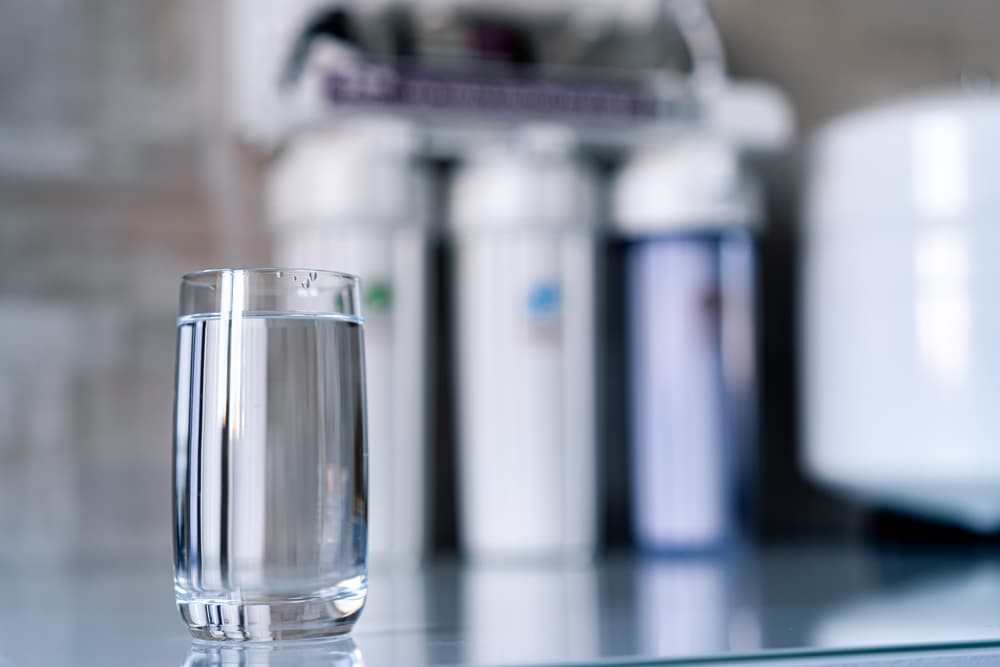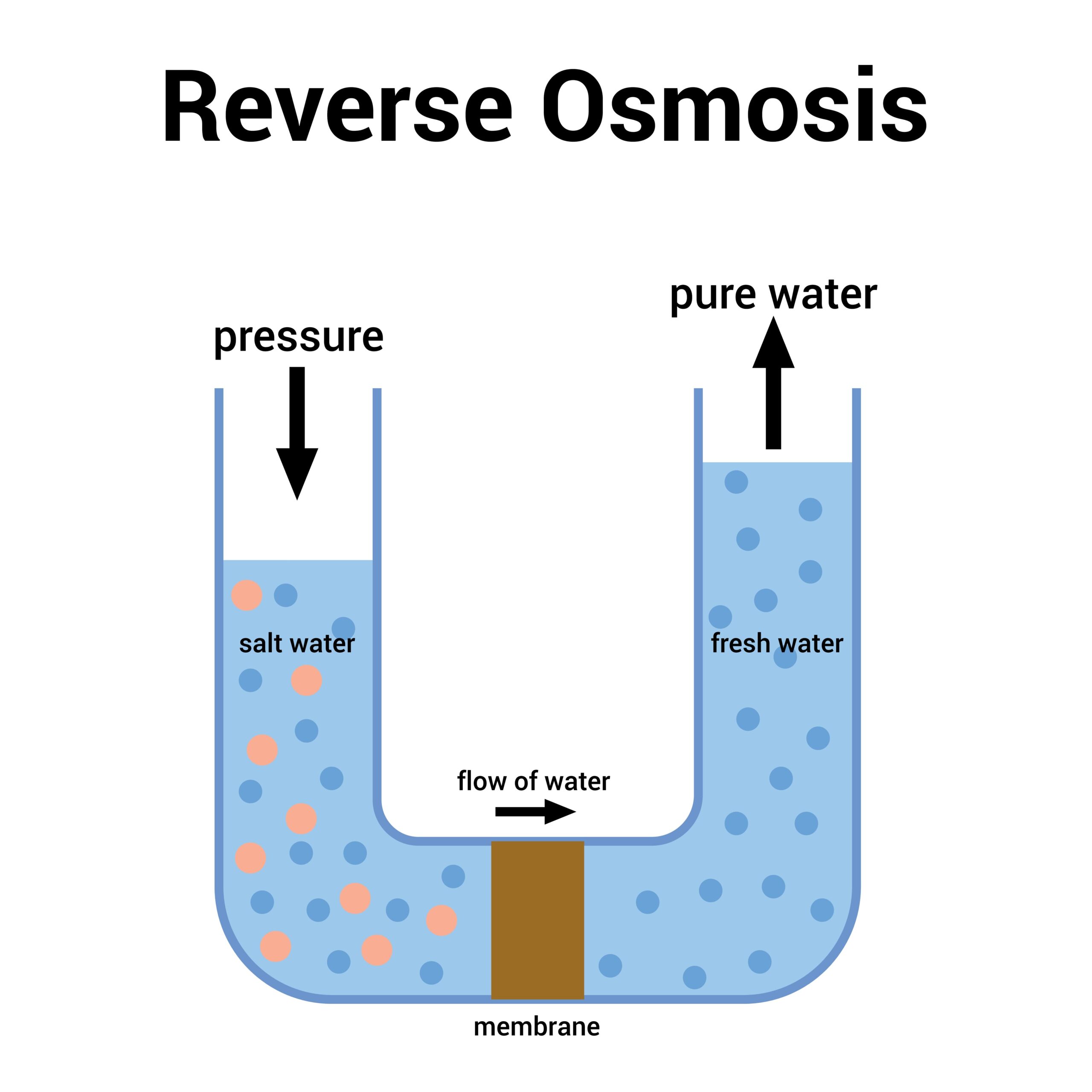While water is one of the essential requirements for human life, more than 97% of the world’s water is salt water. Saltwater is unsuitable for drinking, irrigation, or most other uses.
You may wonder how long it takes to produce fresh water if you consider investing in a reverse osmosis system. Keeping track of how long it takes to produce water that’s safe to drink can aid process optimization and planning.
The average time a reverse osmosis (RO) system takes to make fresh water from saltwater can vary. The feed water quality, the number of dissolved solids in the feed water, and the operating pressure level influence duration. Generally, most RO systems can desalinate between 24 and 36 gallons per hour.
This blog post covers the reverse osmosis system’s average operation time.
Let’s start with the basics and examine the primary purpose of reverse osmosis systems and how they might help cruisers.

What Is Reverse Osmosis?
Reverse osmosis is a process used to remove dissolved minerals and impurities from water from a salinated water source. It uses pressure to force water molecules through a semipermeable membrane. Desalination plants often use this process to remove salt and impurities from seawater, turning it into fresh drinking water.
For the reverse osmosis system to work, the saltwater must be pressurized through the tiny pores of the semipermeable membrane. The membrane’s pores are small enough to allow water molecules through, but salt molecules and other impurities don’t fit through.
The impurities are left behind as the saltwater is forced through the membrane’s pores. The only thing that comes out on the other side is desalinated water.
What Do You Need To Purify Salt Water To Drink?
Your marine water maker is equipped with the following components to make saltwater drinkable:
- A pre-filter: The pre-filter helps to remove any large particles or sediment from the water before it enters the RO system.
- Semipermeable membrane: The semipermeable membrane is where the magic happens, and all dissolved minerals and impurities are removed from the water.
- Post-filter: The post-filter helps to remove any remaining particulates or impurities that might have made it past the semipermeable membrane.
- Storage tank: Finally, the storage tank holds all the freshly made water supplies until you are ready to use them.
The process is relatively simple and efficient, making it popular for businesses that regularly produce large quantities of fresh water. But how long does the process take? And that brings us to the next point in this article.
How Long Does It Take To Make Fresh Water From Salt Water?
The time it takes to purify salt water to drink depends on the water maker. Some water makers can create fresh water in a few hours, while others may take more time.
The size, capacity, and other features added to the water maker also affect production time.
How Do You Measure the Production Time?
Production Capacity
Understanding the units of measurement for freshwater output might help you choose a water maker more quickly.
Watermakers’ capacity is usually measured in Gallons Per Hour (GPH) or Gallons Per Day (GPD). This is because they aim to produce large amounts of water.
GPH and GPD are units in the volume flow rate category widely used in the American unit system. This quantifies the volume that goes across an area per unit of time.
Observe the specifics to determine the time RO systems take to convert salt water into fresh water.
Feed Water Quality
Feed water quality is important in determining how long it will take to make fresh water. If the feed water is high in dissolved solids, it will take longer for the RO system to work. The operating pressure level also plays a role; higher pressures will increase production but put additional strain on the system.
Production Rates
RO systems typically produce 24 and 36 gallons of desalinated seawater per hour. This includes drinking water and water used for cooking, cleaning, and other purposes. Larger systems may produce more water, while smaller units may make less.

Let’s see an example.
A company dedicated to cruising has been having trouble making drinkable water. One of the improvement opportunities they noticed was the time of water production. So, one of their main objectives is to find a suitable system that doesn’t take more than one hour to produce at least 50 gallons of water.
Our Honda EU2000i desalination system can be the best chance to improve their water production time. This system to power 20 or 60 GPD or 480 to 1440 GPD, depending on the model.
Generally speaking, the larger the water maker, the faster it can produce fresh water. Additionally, water makers with higher capacities will typically be able to make fresh water more quickly than those with lower powers.
Get the Best Quality RO Systems for Boats and Yachts
In conclusion, reverse osmosis systems are an efficient way to turn saltwater into freshwater while saving time.
If you’re considering investing in a reverse osmosis system for your business, contact us, and we will gladly asses you on finding the most time-effective watermaker for your specific needs.
Frequently Asked Questions: How Long Do RO Systems Last?
The Pros Of Reverse Osmosis Water Filtration Systems
Watermakers: Practical and Space-Saving Items for Sailing
Are Watermakers Expensive?Reverse Osmosis Filtration System’s Energy Consumption






